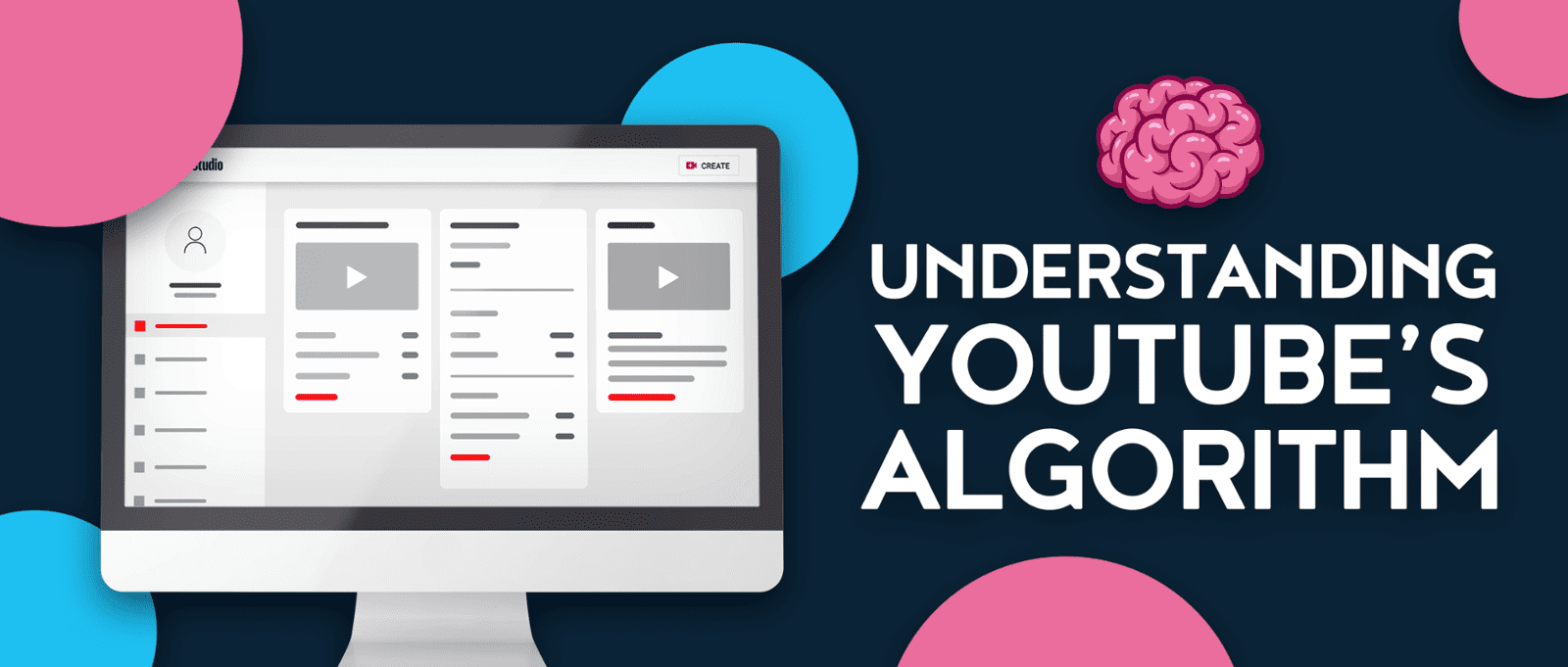
In the vast and ever-evolving world of online content creation, one platform reigns supreme for video creators - YouTube. With billions of active users and an ever-expanding library of videos, standing out from the crowd can be a daunting task. That's where YouTube's algorithm becomes the gatekeeper to success, determining which videos will shine and which will be lost in the digital sea.
If you've ever wondered why some videos seem to effortlessly garner millions of views while others struggle to gain traction, the answer lies within the mysterious workings of YouTube's algorithm. As a content creator, understanding this intricate system is paramount to maximizing your video's reach, engagement, and overall success on the platform.
In this comprehensive guide, we will demystify the inner workings of YouTube's algorithm, providing you with essential insights and strategies to navigate its complexities. From the factors that influence video rankings to actionable tips on optimizing your content, we'll equip you with the knowledge to thrive in the competitive landscape of YouTube.
The Purpose of YouTube's Algorithm
The primary purpose of YouTube's algorithm is twofold: first, to deliver a seamless and enjoyable user experience by presenting viewers with videos they are likely to find interesting and engaging, and second, to keep users on the platform for as long as possible. Achieving these goals not only satisfies the desires of YouTube's diverse audience but also serves the platform's broader business objectives, as more engaged viewers mean more ad revenue and increased user retention.
To accomplish this, YouTube's algorithm employs a complex system that continuously analyzes user behaviour, interactions, and preferences. By understanding the content that users find compelling, the algorithm strives to offer relevant videos that cater to their individual tastes. This personalized approach enhances user satisfaction, increasing the likelihood that viewers will return to the platform for more content.
Additionally, YouTube's algorithm is designed to strike a delicate balance between meeting viewer preferences and promoting a diverse range of videos. This ensures that content creators have a fair chance of reaching new audiences and encourages creativity across the platform.
Understanding this underlying purpose of YouTube's algorithm is crucial for content creators looking to thrive on the platform. By crafting compelling, high-quality videos that resonate with their target audience, creators can align their content with the algorithm's goals, leading to increased visibility, engagement, and ultimately, a more successful YouTube channel.
Factors Considered by the Algorithm
To achieve its goal of delivering personalized and engaging content to viewers, YouTube's algorithm takes into account a myriad of factors when determining which videos to recommend. Understanding these key factors is essential for content creators looking to optimize their videos for greater visibility and reach.
Watch Time: The King of Ranking Factors
One of the most critical metrics YouTube's algorithm considers is watch time, which refers to the total amount of time viewers spend watching a video. High watch time indicates that a video is captivating and valuable to its audience, prompting the algorithm to promote it further.
Content creators should focus on creating compelling videos that keep viewers engaged from start to finish. By providing valuable information, entertainment, or a combination of both, creators can increase their watch time, signalling to the algorithm that their content deserves a spot among top recommendations.
Engagement Metrics: Likes, Comments, and Shares
Beyond watch time, engagement metrics like likes, comments, and shares play a significant role in the algorithm's decision-making process. Videos that receive a high number of likes and comments indicate that the content resonates with viewers and sparks conversations. Similarly, videos that are shared by viewers demonstrate that the content is share-worthy and has the potential to attract a broader audience.
Content creators should actively encourage viewers to engage with their videos by asking for likes, comments, and shares. Responding to comments and fostering a sense of community around their content can also boost engagement and help improve video rankings in the algorithm.
Viewer Retention: Keeping Audiences Captivated
Viewer retention, often measured as the percentage of the video watched, is another crucial factor in YouTube's algorithm. Videos that retain viewers' attention throughout their duration are more likely to receive favourable rankings.
Creators should aim to create content that maintains a strong pace, delivers on promises made in titles and thumbnails, and keeps audiences engaged until the end. By hooking viewers early and delivering valuable content consistently, creators can improve viewer retention and increase the chances of their videos being recommended.
Click-Through Rate and Attractive Thumbnails
The click-through rate (CTR) measures the percentage of viewers who clicked on your video after seeing it in search results or recommendations. A high CTR indicates that your video's title and thumbnail are compelling and effectively communicate what the video is about.
Creators should invest time in creating eye-catching thumbnails that accurately represent the video's content and intrigue viewers. Titles should be clear, descriptive, and engaging, encouraging viewers to click and watch the video.
Consistency and Publishing Frequency
Consistency in content creation and a regular publishing schedule can positively impact video rankings. YouTube's algorithm favours channels that upload content consistently and frequently.
Creators should establish a manageable publishing schedule and aim to stick to it. Consistent content helps build anticipation among viewers and keeps them coming back for more.
User Behavior and Preferences: Tailoring Recommendations
YouTube's algorithm learns from users' behaviour and preferences to tailor its recommendations. This means that the more a user interacts with specific types of content, the more the algorithm will surface similar videos in their recommendations.
For content creators, this emphasizes the importance of understanding their target audience and delivering content that aligns with their interests. By consistently producing videos that resonate with their niche audience, creators can build a loyal fan base and increase the likelihood of repeat views and engagement.

Optimizing Videos for the Algorithm
Optimizing your videos for YouTube's algorithm is essential to increase their visibility and reach a broader audience. By strategically implementing various techniques, you can enhance your video's chances of ranking higher in search results and recommendations.
Crafting Engaging and Relevant Video Content
The foundation of video optimization lies in creating high-quality, engaging, and relevant content. Understand your target audience's interests and preferences and tailor your content to meet their needs. Focus on providing value, entertainment, or solving a problem for your viewers.
Hook viewers within the first few seconds to capture their attention and encourage them to watch the entire video. A strong introduction can set the tone for the rest of the content and entice viewers to stay engaged.
Keep your content concise and to the point while ensuring it delivers on the promise made in the title and thumbnail. Avoid unnecessary tangents that may lead to viewer drop-offs.
Strategic Keyword Research and Video Tags
Thorough keyword research is crucial for video optimization. Identify relevant keywords that align with your content and target audience's search queries. Tools like YouTube's Search Suggest and Google Trends can help you discover popular and relevant keywords.
Incorporate your target keywords strategically in the video title, description, and video tags. This helps YouTube's algorithm understand the context of your video and improves its chances of showing up in search results and recommendations.
Creating Playlists and Organizing Content
Organizing your videos into playlists can improve user experience and video discoverability. Playlists allow viewers to binge-watch related content, increasing their overall watch time on your channel.
Group videos with similar themes or topics into playlists and use descriptive titles and thumbnail images for the playlists. This encourages viewers to explore more of your content and boosts your overall channel performance.
Monitoring and Analyzing YouTube Analytics
YouTube Analytics provides valuable insights into your video performance and audience behaviour. Pay attention to metrics like watch time, audience retention, traffic sources, and audience demographics.
Use this data to identify areas for improvement, understand what content resonates with your audience, and refine your future video strategy accordingly.
Staying Compliant with YouTube's Policies
As a content creator on YouTube, it's essential to adhere to the platform's community guidelines and policies to maintain a positive online environment and avoid potential penalties or channel strikes. Understanding and complying with these policies will help safeguard your channel's reputation and longevity.
YouTube's Community Guidelines
YouTube's Community Guidelines outline the acceptable behaviour and content standards for all users on the platform. These guidelines prohibit various types of content, including but not limited to:
- Nudity or sexual content that is explicit or pornographic
- Harassment, hate speech, or cyberbullying directed at individuals or groups
- Harmful or dangerous content that encourages violence, self-harm, or illegal activities
- Misleading or spammy content designed to deceive viewers
Before uploading any video, review YouTube's Community Guidelines to ensure your content aligns with their standards. Violating these guidelines can lead to your video being removed or your channel receiving strikes, which may result in restrictions or termination.
Copyright and Fair Use
Respect copyright laws and adhere to YouTube's copyright policies. Avoid using copyrighted materials, such as music, images, or video clips, without permission from the copyright holders. Make sure to use royalty-free music or content with the appropriate licenses.
If you believe your video falls under fair use, where you use copyrighted material for purposes such as commentary, criticism, news reporting, education, or parody, provide proper attribution and context in your video and description. However, remember that fair use is a legal doctrine with specific requirements, so it's best to consult legal counsel if you have doubts about fair use applicability.
Advertiser-Friendly Content
YouTube has advertiser-friendly guidelines that ensure ads are displayed on content suitable for all audiences. Avoid content that includes excessive profanity, violence, or controversial topics that may be deemed not suitable for advertisers.
Adherence to these guidelines can help you monetize your content through YouTube's Partner Program and maintain a healthy relationship with advertisers.
Restricted and Age-Restricted Content
Some content on YouTube may be classified as "Restricted" or "Age-Restricted." Restricted content is suitable for viewers aged 18 and above, while age-restricted content requires viewers to sign in and confirm their age.
Follow the age restrictions and use the "Age-Restriction" feature when necessary to comply with YouTube's policies and protect younger audiences from inappropriate content.

Conclusion
Navigating the dynamic world of YouTube's algorithm is an essential journey for content creators seeking to make their mark on the platform. Understanding the algorithm's inner workings empowers creators to optimize their videos, increase visibility, and reach a broader audience.
YouTube's algorithm serves a dual purpose: enhancing user experience by delivering personalized and engaging content and meeting the platform's broader business objectives by maximizing user retention and ad revenue. Key factors, such as watch time, engagement metrics, viewer retention, and user behaviour, influence the algorithm's decision-making process.
To succeed on YouTube, content creators must craft compelling and relevant video content that captivates viewers from the first few seconds. Thorough keyword research and strategic use of tags, titles, and descriptions help align videos with viewer search queries, leading to improved discoverability.
Organizing videos into playlists and maintaining a consistent publishing schedule contribute to an engaging viewing experience and build viewer loyalty. Monitoring YouTube Analytics provides valuable insights to refine content strategies and cater to audience preferences effectively.
Staying compliant with YouTube's community guidelines and copyright policies is paramount for sustaining a positive channel reputation. Adhering to advertiser-friendly content guidelines allows creators to monetize their content through the YouTube Partner Program.
As you embark on your YouTube journey, remember that success requires patience, dedication, and a willingness to adapt to the ever-changing landscape of content creation. By continuously honing your skills, engaging with your audience, and creating content that resonates with viewers, you can unlock the full potential of YouTube's algorithm and propel your channel to new heights.
Now it's time to take what you've learned and put it into action. Embrace the power of YouTube's algorithm, and let your creativity shine as you connect with viewers worldwide, sharing your passion, knowledge, and talents with the ever-expanding YouTube community.

